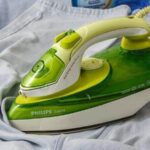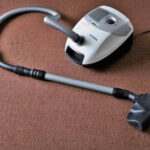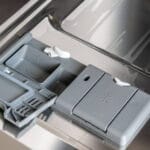Using fabric softener on various clothing items is arguably a bittersweet experience. On one hand, your laundered items become soft and static-free, while on the other, their water-absorbency decreases significantly.
The trade-off might not be a big deal for regular clothing but when it comes to towels and workout clothes, it becomes a real concern.
First of all, it does not matter how big and fluffy your towels are. If they cannot effortlessly absorb each drop of water hanging your skin, they are worthless. Similarly, workout apparel is only necessary if it is breathable and absorbent. A regular fabric softener does a good job at killing both of these properties.
This begs the question whether you should use fabric softener on towels.
In summary, avoid using fabric softener on towels because it reduces their water-absorbency significantly thus affecting their performance. A towel that is treated with fabric softener is conditioned to feel soft but the conditioning prevents water from penetrating into the fabric fibers.
The Effect of Fabric Softener on Towels

To understand the effect of fabric softeners on towels, let’s begin with a brief background.
History goes that fabric softeners were first discovered in the 1930s as laundry experts searched for cotton fibers’ conditioning agents. The new discovery came in handy, because the textile industry was quickly shifting from traditional soap products which made clothes feel soft to the touch to synthetic detergents.
Prior to the introduction of synthetic laundry detergents, soaps left a lot of residue on clothes and the residue made fabrics feel softer. Synthetic detergents rinsed more properly, thus making clothes feel rough on the skin.
Fabric softeners became a new household attraction because they served a dual function; making clothes soft and reducing static properties. On the downside, consumers identified the coating they leave on fabrics as a source of problems.
In particular, towels, workout clothes and microfiber items lose their absorbent property, which makes their performance less satisfying.
Fabric softeners have waterproofing effects on fabrics making it difficult for fabric fibers to transport water or moisture deep into their surfaces.
Rinsing Towels with Vinegar
It is common for towels that are not washed in fabric softener to feel course as sandpaper after drying, assuming that you do not use dryer sheets as well. The effect is worse for towels hanged on a clothesline. They dry and become rough especially after repeated washing.
This can pose the temptation to use fabric softener despite its negative implications.
But in the actual sense, you do not have to rely on fabric softeners to make your towels or clothes soft. You can use vinegar which is a natural and reliable all purpose cleaner.
Your towel stands to benefit in multiple ways from the good old vinegar. Firstly, it will feel softer and fluffier. Secondly, vinegar strips soap residue from towels thus making them appear brighter. Lastly, it freshens towels by killing funky smells.
So, how then do you use vinegar on towels?
You can use vinegar on a new or old towel.
Vinegar helps your new towel to reach its ultimate softness by stripping of silicone coatings that are used in manufacturing plants.
Simply launder the towel in hot water with a ¼ cup of vinegar. You can see the steps in our detailed article for how to wash towels with vinegar.
If the towel has a bright color such as red, begin by soaking it in salty water. Salt sets color in fabrics, preventing them from fading quickly during subsequent washes.
To rinse an old towel in vinegar, follow the steps below to wash it first.
Step 1: Check the care label
Your towel is most likely machine washable but that is not an assumption you want to make. Make sure that you understand the proper way to care for it by reading the care label.
Besides stating the washing method, the label also provides details about the detergent to use as well as the recommended drying method.
Step 2: Sort your towels
If washing multiple towels, sort them by color. Have in mind that the washing needs of your towels vary with color. For example, it might be safe to use bleach with your white and colored towels, but you have avoid it completely if washing dark towels.
Generally, white and colored towels are safe to wash in hot water and regular detergent, whereas dark towels are best washed in warm water and with laundry detergent for darks.
Step 3: Do not overload your machines
Towels are heavy. Be careful placing them in your washer to avoid overloading it. An overloaded washer does not clean clothes or towels properly. Even worse, your towels might end up with detergent stains and the machine can also get damaged.
Ariel recommend a simple hand test to determine whether a washer is overloaded. Place your hand in the drum and see how much space is left. If the space can only accommodate your hand, then the machine is overloaded.
Remove some towels to allow enough space for the remaining agitate comfortably.
Step 4: Put the right amount of detergent
Add detergent to the detergent dispenser. Ensure that you do not exceed the recommended amount. A good practice is to reduce the amount by half when washing towels. This allows them to rinse properly for the purpose of maintaining the original texture.
Step 5: Add vinegar to the fabric softener compartment
Use vinegar in the place of fabric softener. Unlike fabric softener, vinegar softens towels and clothes without leaving a coating on the fabric fibers.
It also strips off excess detergent from towels, which results to freshening and texture improvement.
Worried about the smell of vinegar? Here is how to get rid of it.
Step 6: Wash towels in hot water
Choose the hot water setting unless you are washing dark towels. It is important to wash towels in hot water because they are heavy duty. Hot water serves the purposes to cleaning and disinfecting. Use warm water to wash dark towels to prevent color bleeding.
Step 7: Dry your towel
Dry your towel in the dryer or on a clothesline. Do not use dryer sheets if you choose a dryer as your drying option.
Shake your towel well if you decide to line dry it. Further, do not let it dry completely on the clothesline. Transfer it in the dryer when it slightly damp so that it feels soft after drying completely.
Can you use Dryer Sheets instead of Fabric Softener?
It is not a good idea to use dryer sheets on towels to enhance their softness. Just like fabric softener, dryer sheets leave a coating that has a negative effect on the performance of your towel.
A towel dried with dryer sheets absorbs water poorly.
Using Aluminum Foil in the Dryer

Instead of dryer sheets, throw a ball of tinfoil in the dryer while drying your towels. The purpose of the ball is to remove static cling. It does not make your towels or clothes softer.
But assuming you already used vinegar in the rinsing stage, your towels should feel soft and the tinfoil ball should only be a bonus to prevent static-build up.
If you are cautious about aluminum foil leaving traces of color on your white towels, use the ball with colored clothes or towels first.
Clothes you Should Not Use Fabric Softener On
Towels: If you love your towels soft and fluffy, fabric softener should not be your idea to achieve the goal. Make vinegar your friend instead.
Workout clothes: The only reason you own workout clothes is performance qualities such as breathability and moisture-wicking ability. Fabric softener takes away both of these effortlessly by coating your clothes with an oily film.
Baby clothes: There are two reasons to stay away from fabric softeners when washing baby clothes. To start with, babies are sensitive and chemicals that are present in fabric softeners can lead to skin sensitivity issues.
Secondly, fabric softener makes flame resistant baby clothes more prone to catching fire after coating them with a waxy film.
Swimwear: Swimming costumes are made with water resistant fabrics such as polyester, nylon and spandex. Water-resistant fabrics are known to dry quickly because they are poor at absorbing and retaining moisture. Rinsing them with fabric softener coats them with an oily residue that slows down the rate at which they release moisture.
Microfiber Cloths: If you want to make your microfiber cloths and items waterproof, fabric softener is your best bet. Once they come into contact with it, you can as well give them a retirement bonus. They will not wipe surfaces dry anymore.
FAQs
What happens if you use fabric softener on towels?
Using fabric softener on towels is not a good idea because it coats them with an oily film that reduces their absorbency thus making them less effective at drying the body or surfaces. A good towel should offer top-notch performance by drying the body effortlessly.
How do you remove fabric softener from towels?
Remove fabric softener from clothes by washing them in hot water and vinegar. Add vinegar to the laundry detergent compartment then place your towels in the drum. Choose the hot water setting and run a normal cycle.
How do hotels get their towels so soft?
Hotels make their towels soft and fluffy by washing and rinsing them with vinegar. You can wash towels that are coated with laundry detergent or fabric softener in hot water and vinegar. You can as well wash towels with laundry detergent and use vinegar during the rinse cycle.
Should you use dryer sheets on towels?
Avoid using dryer sheets on towels because they have the same effect as fabric softener. They coat your towels with a film that reduces water absorbency.





